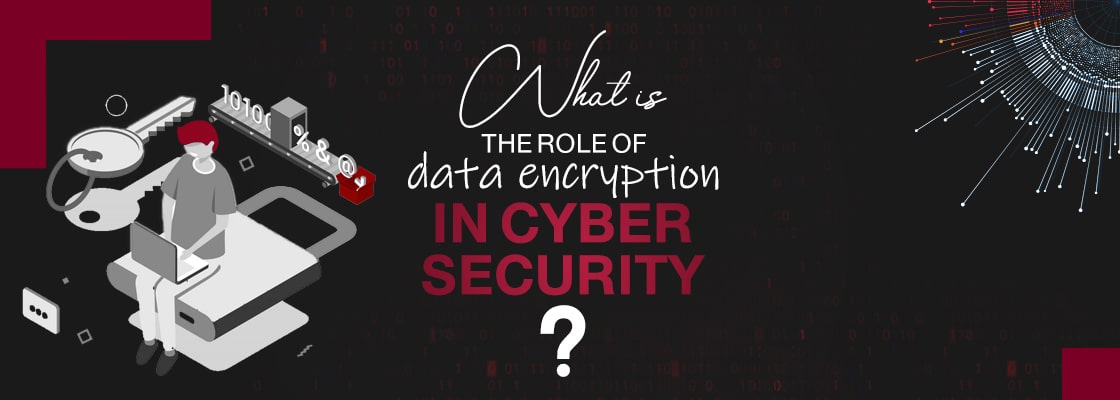
Data encryption is a crucial aspect of cyber security, as it helps protect sensitive information from unauthorized access.
What is data encryption?
Data encryption is the process of converting plaintext data into a coded form known as “ciphertext.” This is typically achieved using an encryption algorithm and a key, which is a string of bits that is used to scramble and unscramble the data. The encrypted data can only be decrypted and read by someone who possesses the correct key. Without the key, the encrypted data is effectively unreadable, even if an attacker is able to access it.
Types of encryption algorithms
There are several different types of encryption algorithms that can be used to encrypt data, each with its own unique characteristics.
Some of the most common types include:
- Symmetric encryption: With symmetric encryption, the same key is used to both encrypt and decrypt the data. This means that the sender and recipient of the data must both have the key in order to communicate securely.
- Asymmetric encryption: Asymmetric encryption, also known as public-key encryption, uses two different keys: a public key and a private key. The public key is used to encrypt the data, while the private key is used to decrypt it. This allows the sender to encrypt the data using the recipient’s public key without the need to share a secret key.
- Hash functions: Hash functions are a type of encryption algorithm that converts plaintext data into a fixed-length string of characters, known as a hash value. The hash value is unique to the original data, but it cannot be used to recreate the original data. Hash functions are often used to verify the integrity of data rather than to encrypt it.
How data encryption is used in cyber security?
There are many different ways in which data encryption can be applied to enhance cyber security.
Some common examples include:
- Encrypting data in transit: When data is transmitted over the internet or other networks, it can be vulnerable to interception by attackers. Encrypting the data can help prevent unauthorized access, even if the data is intercepted.
- Encrypting data at rest: Data that is stored on a device, such as a computer or mobile phone, can also be vulnerable to unauthorized access. Encrypting the data can help protect it, even if the device is lost or stolen.
- Encrypting backups: It’s important to regularly back up important data in case of a disaster, such as a fire or a cyberattack. However, backups can also be vulnerable to attack. Encrypting the backups can help to ensure that they remain secure, even if they fall into the wrong hands.
- Encrypting emails: Emails are a common target for attackers, as they often contain sensitive information. Encrypting emails can help to protect the confidentiality of the message, even if it is intercepted.
Challenges and best practices for data encryption
While data encryption is an essential tool for enhancing cyber security, there are also some challenges and best practices to consider.
One challenge of data encryption is the need to balance security with convenience. Encrypting data can make it more difficult for unauthorized users to access or tamper with it, but it can also make it more difficult for authorized users to access the data they need. This can be particularly challenging for organizations that need to manage large amounts of data and ensure that it is available to authorized users in a timely manner.
To address this challenge, organizations should carefully consider their data encryption needs and implement solutions that strike a balance between security and convenience. This may involve implementing different levels of encryption for different types of data or implementing encryption only for certain sensitive data sets.
Another challenge of data encryption is the need to manage and secure the keys that are used to encrypt and decrypt the data. If these keys are lost or compromised, it can be extremely difficult to recover the encrypted data, which can have serious consequences for the organization.
To address this challenge, organizations should implement robust key management practices, including regularly rotating keys, storing keys in secure locations, and implementing measures to protect against key compromise. This may include the use of hardware security modules (HSMs) or other secure key storage solutions.
A further challenge of data encryption is the need to ensure that encrypted data is available to authorized users in a timely manner. This can be particularly challenging for organizations with distributed networks or users who need to access data from multiple locations.
To address this challenge, organizations should implement data encryption solutions that are designed to support distributed networks and provide fast, efficient access to encrypted data for authorized users. This may include the use of encryption technologies such as keyless encryption or hybrid encryption, which can help improve the performance and scalability of data encryption solutions.
Overall, data encryption is a critical component of cyber security, but it can present a number of challenges for organizations. By carefully considering their data encryption needs and implementing best practices for key management and data access, organizations can effectively secure their sensitive data and protect against unauthorized access or tampering.


